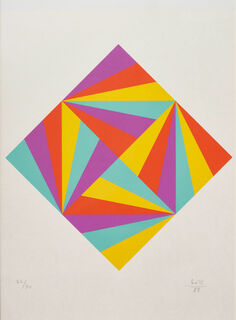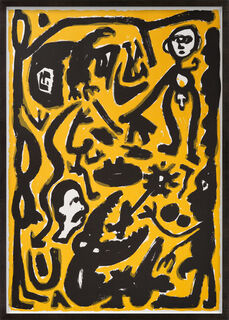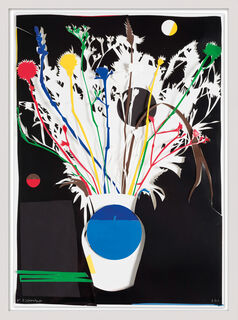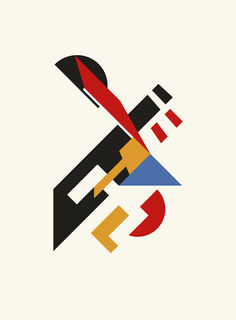Found: 279
Serigraphy/Screen Printing
In screen printing, the artist uses a fine-meshed screen made of textile or plastic fabric that is stretched over a printing frame.
Where areas should remain free of colour, the screen is covered with stencils cut from paper, for example.
With the help of a squeegee (a kind of scraper, which in screen printing is made of rubber and has a sharp or rounded edge), the ink is applied to the paper through the open areas of the printing form (screen stencil) either manually or by a machine.
With Pop Art at the latest, screen printing became a popular technique for artists and is now widespread across all styles.































